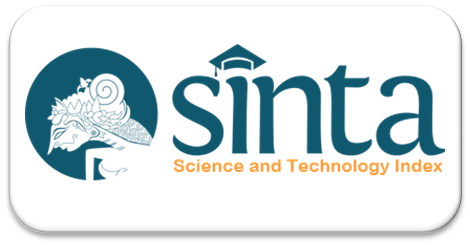KETERKAITAN PARITAS DAN UMUR IBU DENGAN DIASTASIS MUSCULUS RECTI ABDOMINIS (DMRA)
DOI:
https://doi.org/10.35960/vm.v10i1.303Abstract
Background: Physiological Adaptation to pregnancy was dramatic and often
underestimated. The time and intensity of change varies among different systems.
Early in pregnancy, uterine growth occurs due to hyperplasia and hypertrophy of
myometrium cells under the influence of estrogen. During the first few months of
pregnancy, uterine wall becomes much thicker and softer, at the age of just
months uterus into a muscular pouch with soft walls, easy curved and thickness of
0.5-1 cm or less (Margaret A; 2009), in addition to the hormonal changes caused
by relaxin, progesterone and estrogen combines with the growth of the uterus may
cause abdominal stretch the muscles bibs, affecting most of the rectus abdominis
muscles that cause separation (diastasis recti abdominis). These postural changes
can affect the placement angle of pelvic and abdominal muscles, affecting
postural biochemistry. If this continues, diastasis rectiadbominis vector
akanmenyebabkan a loss in muscle strength, and will cause a reduction in muscle
strength at the time of contraction that would cause labor becomes longer
(Meredy, 2000). Therefore, the authors interested in examining the "Linkage
history of childbirth and the mother's age to diastasis recti abdominis".
Methods: using chi square.
Result: The description contained primiparas by 72.1%, description maternal age
of 21.4%, description of events diastasis recti abdominis musculus by 27.3%,
There is a relationship between parity with diastasis recti abdominis, There was no
relationship between parity with diastasis recti abdominis
Keywords: diastasis recti abdominis, pregnancy
Downloads
Published
How to Cite
Issue
Section
License
Submitted paper will be firstly reviewed by the editors to determine whether the paper meet the edition theme and submission guidelines. Papers which meet the theme and the guidelines will be assigned to selected reviewers for peer-reviews. Viva Medika: Jurnal Kesehatan, Kebidanan dan Keperawatan is a double blind peer-reviewed journal which involves reviewers based on their experties relevant to the topic of the paper. Final decision of paper acceptance is solely decided by the editors according to reviewers' comment.
Plagiarism and self-plagiarism are prohibited. Viva Medika: Jurnal Kesehatan, Kebidanan dan Keperawatan uses PlagiarismCheckerX and iThenticate to scan papers for detecting plagiarism. Thus, Appropriate citation and quotation should be used

.png)








